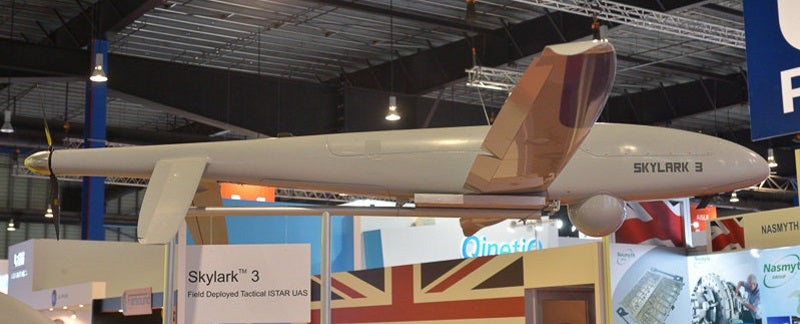
The Skylark 3 mini tactical unmanned aircraft system (UAS) was introduced at the Singapore Airshow in February 2016. It is the latest member of the Skylark family of unmanned air systems, designed and manufactured by defence electronics firm Elbit Systems, primarily for the Israeli Defence Forces (IDF).
The new UAS is designed to offer brigades and military units with enhanced situational awareness and safety in the battlefield. An undisclosed customer has placed an order for the Skylark 3 UAS.
The Skylark family of UAS includes Skylark I, Skylark I LE, Skylark I LEX, Skylark II, and Skylark Block 2, a US version of Skylark 1 LE. The variants are in service with a number of countries across the world.
Missions
The small tactical UAS can perform military missions such as force protection, counterinsurgency, and complex ISTAR (intelligence, surveillance, target acquisition and reconnaissance) in network-centric operations.
In addition to military missions, the UAS can also be used for perimeter security, coastal security and counter-terrorism tasks.
Skylark 3 UAS design and features
The Skylark 3 UAS consists of three main components, which include an unmanned aerial vehicle (UAV), payloads, launcher, and ground control station.
It features two fixed main wings with a span of 4.8m, mounted below the fuselage in the middle section. The fixed inverted-V tail assembly offers better stability and control during the flight.
With a maximum take-off weight of 45kg, the UAV can carry payloads of 10kg. The aircraft is launched by a pneumatic launcher, either placed on the ground or mounted on a field vehicle. It can be landed using a parachute recovery system.
The UAV has the ability to fly autonomously from take-off to landing.
Payloads carried on Skylark 3 UAS
A payload pod mounted under the nose of the tactical aerial vehicle incorporates state-of-the-art electro optical / infrared (EO/IR) sensor for capturing high-definition imagery and videos under difficult field conditions.
The Skylark 3 UAV can loiter over the next hill to collect real-time reconnaissance and intelligence data. The on-board sensors allow the air vehicle to detect, localise and classify multiple targets.
Monitoring and control
An advanced digital encrypted data link facilitates secure data transfer between the aerial vehicle and the ground control station.
The real-time imagery, video and intelligence data acquired by the payloads are shown on a LCD screen display, enabling the operator to safely operate the UAV.
A single ground control station can control two Skylark 3 unmanned aerial vehicles deployed in the same mission.
Skylark 3 mini UAV performance
Powered by an electric propulsion system and a lithium-ion battery, the Skylark 3 mini tactical unmanned aircraft can fly over a long range of 100km. The electric motor, driving a two-blade propeller fitted at the rear, delivers quiet operation.
It can be deployed in 20 minutes and is able to stay in air for up to six hours. The service ceiling of the air vehicle is 15,000ft.
The UAV can be manoeuvred and controlled automatically during operation.
The Global Unmanned Aerial Vehicles (UAV) Market 2011-2021
This project forms part of our recent analysis and forecasts of the global Unmanned Aerial Vehicles (UAV) market available from our business information platform Strategic Defence Intelligence. For more information click here or contact us: EMEA: +44 20 7936 6783; Americas: +1 415 439 4914; Asia Pacific: +61 2 9947 9709 or via email.






